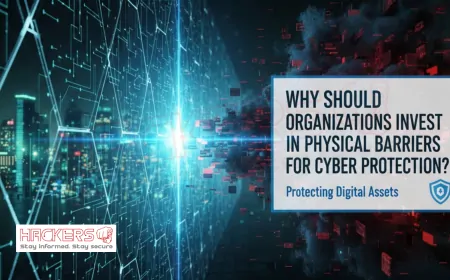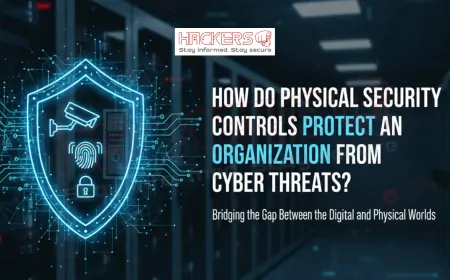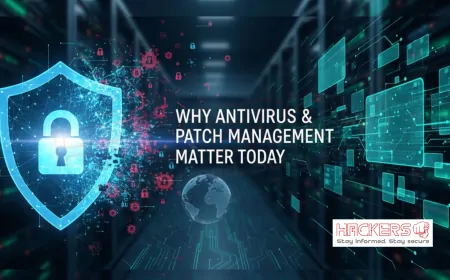Why Are Incident Response Plans Critical for Minimizing Breach Damage?
Picture this: it's a typical Monday morning, and suddenly, your company's systems grind to a halt. Alarms blare in the IT department as alerts flood in about unauthorized access. Panic sets in, but wait: what if there was a clear plan to follow? In 2025, data breaches are more common than ever, costing organizations an average of $4.88 million per incident. Without a solid strategy, that damage can skyrocket. Incident response plans act as a roadmap during chaos, helping teams act swiftly to contain threats and reduce losses. This blog post explores why these plans are essential, breaking down their components, benefits, and real-world applications in simple terms. Whether you're a small business owner or just starting in cybersecurity, you'll see how preparation can turn a potential disaster into a manageable event.

Table of Contents
- What Is an Incident Response Plan?
- The Rising Threat of Data Breaches in 2025
- Why Incident Response Plans Are Critical
- Key Components of an Effective Plan
- Steps to Develop Your Plan
- Benefits of Having a Plan
- Common Challenges and Solutions
- Real-World Examples
- Best Practices for Implementation
- Future Trends in Incident Response
- Conclusion
- FAQs
What Is an Incident Response Plan?
An incident response plan, often called an IRP, is a documented set of instructions that outlines how an organization should handle a cybersecurity incident. Think of it as an emergency playbook for when things go wrong, like a fire drill but for digital threats. It covers everything from detecting a breach to recovering normal operations.
In basic terms, a breach is when unauthorized people access sensitive data, which can lead to theft or disruption. The plan helps teams respond quickly and methodically, reducing confusion. For beginners, it's like having a recipe: follow the steps, and you'll get better results than improvising.
These plans are based on frameworks like those from NIST, which is a government body that sets standards. They include roles for team members, communication strategies, and tools needed. Without one, responses can be haphazard, leading to more damage.
In 2025, with threats like ransomware up 37%, having an IRP is no longer optional.
The Rising Threat of Data Breaches in 2025
Data breaches continue to surge in 2025, with incidents involving human error in 68% of cases.
Why the rise? Remote work and cloud services expand attack surfaces, areas where hackers can enter. AI is now used in 16% of breaches, making attacks harder to spot.
Costs are staggering: $4.44 million on average, down slightly but still huge.
Understanding the landscape shows why plans matter: they cut response time and limit exposure.
Why Incident Response Plans Are Critical
Incident response plans are critical because they minimize damage by enabling quick action. Organizations with plans save $2.66 million per breach, a 61% reduction.
In chaos, without a plan, teams might argue over steps, delaying containment. Plans assign roles, like who notifies authorities or communicates with stakeholders.
They also aid compliance. Laws like GDPR require prompt reporting, and plans ensure this happens. For reputation, swift response shows competence, retaining customer trust.
In 2025, with complex threats, plans are lifelines, turning breaches from catastrophes to recoverable events.
Key Components of an Effective Plan
An effective plan has several parts. Preparation: Build a team and identify assets.
- Identification: Detect incidents through monitoring.
- Containment: Stop the spread, like isolating networks.
- Eradication: Remove threats, such as malware.
- Recovery: Restore systems safely.
- Lessons Learned: Review to improve.
Include communication and legal aspects. These ensure comprehensive coverage.
Steps to Develop Your Plan
Developing a plan starts with assessment: Identify risks and assets.
Form a team with diverse skills. Draft procedures based on frameworks.
Test through simulations. Update regularly, especially after incidents.
For beginners, use templates from NIST to simplify.
Benefits of Having a Plan
Benefits include faster recovery, lower costs, and better compliance.
They foster awareness, reducing human errors. Post-breach, they aid quick return to normalcy.
Overall, they build resilience in a threat-filled world.
Common Challenges and Solutions
Challenges: Resource limits for small firms. Solution: Start basic, scale up.
Lack of testing: Only 30% test plans.
Keeping current: Threats evolve. Update annually.
Real-World Examples
Marriott's 2018 breach affected millions, but their plan helped mitigate by quick notification and fixes.
Suncor in 2023 contained a breach rapidly due to robust planning.
Contrast with Equifax 2017: Poor response amplified damage. Recent like Snowflake 2024 highlighted need for cloud-specific plans.
Best Practices for Implementation
Best practices: Involve all departments. Use automation for detection.
- Train regularly.
- Document everything.
- Partner with experts.
- Review after events.
Future Trends in Incident Response
In 2025, AI aids prediction. Continuous monitoring grows.
Focus on supply chains and AI threats.
| With IRP | Without IRP |
|---|---|
| Faster containment | Prolonged exposure |
| Cost savings | Higher losses |
| Better recovery | Chaos and delays |
Conclusion
Incident response plans are critical for minimizing breach damage by providing structure, reducing costs, and ensuring quick recovery. In 2025's threat landscape, they are essential. By understanding components, benefits, and practices, organizations can prepare effectively.
What is an incident response plan?
A documented guide for handling cybersecurity incidents.
Why are breaches rising?
Due to remote work, AI, and expanded attack surfaces.
What is the average breach cost?
Around $4.88 million in 2025.
How do plans save money?
By reducing costs by 61% through quick action.
What are key components?
Preparation, identification, containment, eradication, recovery, lessons learned.
How to develop one?
Assess risks, form team, draft, test, update.
What benefits do they offer?
Faster recovery, compliance, reduced errors.
What challenges exist?
Resources, testing, updates.
How to overcome challenges?
Start small, schedule drills, review annually.
Can small businesses have them?
Yes, using basic templates.
What is containment?
Stopping threat spread.
Why test plans?
To ensure effectiveness in real scenarios.
What role does AI play?
In detection and prediction.
How often update?
Annually or after incidents.
What stats on human error?
68% of breaches involve it.
Examples of good responses?
Marriott and Suncor minimized damage.
What about bad ones?
Equifax amplified losses.
Trends for 2025?
AI integration, supply chain focus.
Do plans help compliance?
Yes, with reporting requirements.
How build resilience?
Through preparation and review.
What's Your Reaction?










































































